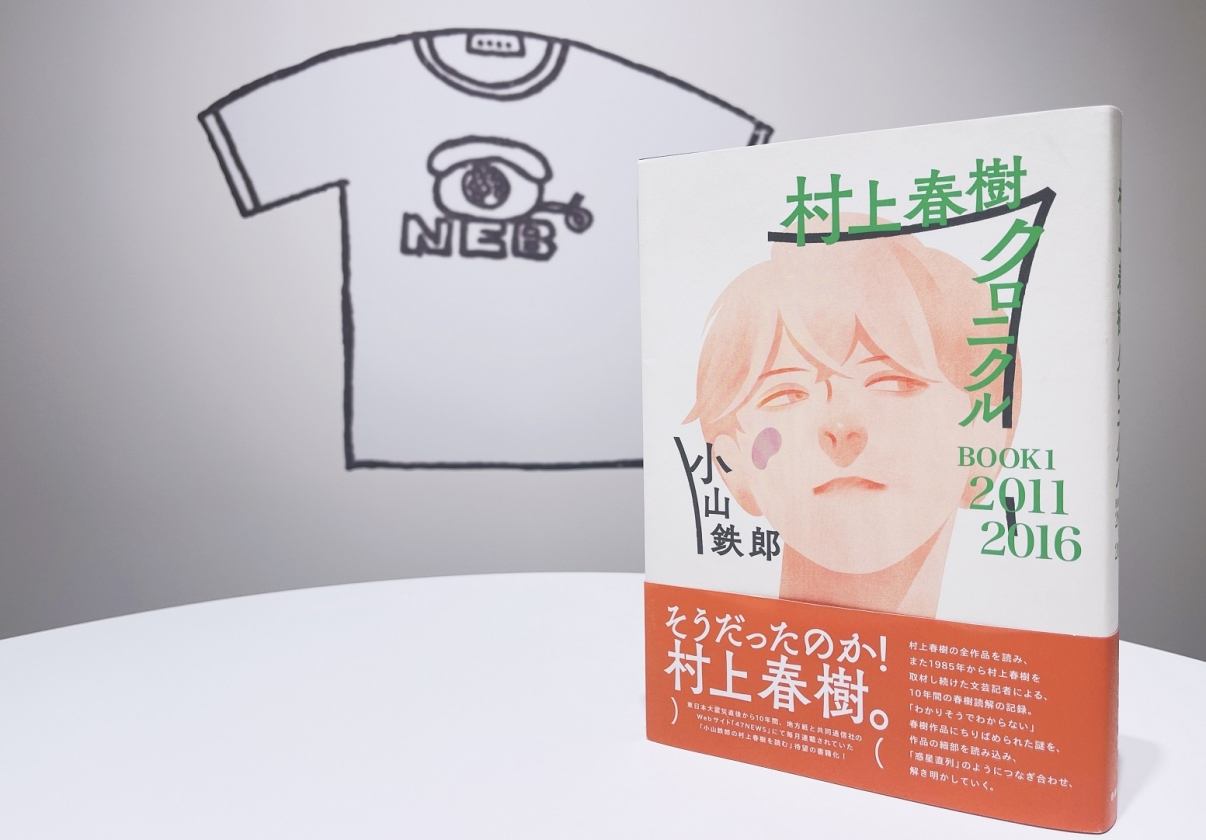

Historical Consciousness and “Boomerang” Thoughts in the Works of Haruki Murakami
2022.05.08
- Tetsurō Koyama
The Waseda International House of Literature had planned to host a conversation between Professor Shōzō Fujii (who contributed the previous essay in this series) and the writer/journalist Tetsuro Koyama in January. They were to speak on the theme “Haruki Murakami, Cats, Mice, and Lu Xun.” Unfortunately, the sixth wave of COVID struck and we were forced to postpone the event just one week before it was to be held. Fortunately, Mr. Koyama agreed to supply the February, 2022 instalment of Encountering the Literature of Haruki Murakami.
Mr. Koyama is well known as a literary journalist that has had the opportunity to interview Haruki Murakami repeatedly since 1995. When I was a graduate student, I had the pleasure of reading his book, Reading the Complete Haruki Murakami. As a reading process that was not overly concerned with plot, the book in fact cut right to the heart of what these works were about, always offering a unique analytical perspective on Murakami’s texts. It was positively illuminating. “It was the age, that time of life when every sight, every feeling, every thought came back, like a boomerang, to me.” (Jay Rubin, trans.; from Norwegian Wood [New York: Vintage International, 2000]) These words are from Norwegian Wood, but Mr. Koyama concludes that one of the distinctive features of Murakami’s literature is a “boomerang-esque thought.” What does this mean, exactly? Let’s dive into this month’s essay and find out!
P.S. We are hoping to host Mr. Koyama and Professor Fujii’s postponed conversation on some fine Summer day.
Quan Hui (Editorial Director, Waseda International House of Literature)
Historical Consciousness and “Boomerang” Thoughts in the Works of Haruki Murakami
Tetsuro Koyama
Since my student days I have always read whatever received the Gunzo Prize for New Writers each year, and this habit continued even after I started working as a journalist for a news agency. I read Hear the Wind Sing in the pages of Gunzo, and I ended up reading Pinball, 1973 there, too.
“These novels are like a woodblock print,” I remember thinking. In an oil painting, the figures usually emerge where the brush touches the canvas, but when an artist makes a woodblock print, the figures emerge from what is left uncarved. The most important parts are the parts left as negative space— this was the feeling I had while reading these novels. As I followed the characters “I” and “Rat” as they spent the summer drinking beer in the pages of Hear the Wind Sing, I found myself, like most readers, also thinking, “I’d really like to have a beer right now, too!” By the time A Wild Sheep Chase came out, though, I had become a police reporter in the city news section handling stories coming out of the Shinjuku Police Station, so I did not have the chance to read it while it was serialized, waiting instead until it came out in hardcover.
But to tell the truth, my first real encounter with Haruki Murakami—that is, the point when my appreciation of his work truly started to deepen—only occurred once I began interviewing him regularly as part of my job.
In the spring of 1984, I shifted from the city news section and the police beat to work as a writer on literature in the cultural news section in a move that gave me the chance to meet any author who interested me whenever they had something new coming out. In June 1985, Murakami’s Hard-Boiled Wonderland and the End of the World was published as part of Shincho’s line of “Specially Commissioned New Works.” I rushed to land an interview with him, and this became my first direct encounter with Haruki Murakami.
The cover has changed now, but at the time, the novel was packaged in a box and bound in pink cloth, and I remember how it felt a little heavy in my hands as I read it on the train to prepare for the interview. I also remember looking around the train and, seeing many others holding the same hefty all-pink book, thinking, “This Haruki Murakami fellow’s getting pretty popular, isn’t he?”
☆
Hard-Boiled Wonderland and the End of the World tells two intertwined stories simultaneously. One is the claustrophobic story of The End of the World, in which a first-person narrating “I” (Boku) live in a Town encircled by a Wall with “no exit;” while the other is the story of another first-person “I” (Watashi) inhabiting an expansive story taking place in the Hard-Boiled Wonderland.
The people in The End of the World are separated from their shadows as they pass through the gate into the Town, leaving them with the Gatekeeper. In other words, they are able to live a peaceful life in exchange for leaving their “heart” to be managed by the Town itself.
But there are those unable to give up their “heart” this way, and these people end up banished to the Woods located within the Town. Will Boku and his shadow escape the Town together, or will they end up separated in the end? These are the kinds of thoughts the novel provokes until, in the final pages, Boku’s shadow escapes the Town while Boku chooses to stay, plunging himself into the chaos of life in the Woods.
The negative space of a Walled Town; the even more negative space of exile in the Woods within the Town’s Wall. Boku enters the doubly negative space of the Woods, but this is an ending that refuses to smooth everything out for the reader. At the end of the write-up of my interview with him, I wrote, “Murakami, with this double refusal of self, seems to be searching for an interior source of power to sustain human existence.” The novel made me feel the sheer power of refusal.
☆
Haruki Murakami ended up winning the Tanizaki Prize (Tanizaki Jun’ichirō Shō) that year for Hard-Boiled Wonderland and the End of the World, and so I had the chance to interview him about it again.
Once again, the conversation turned to the final scene between Boku and his shadow. Murakami said that he thought quite a lot about how he should write this ending scene. Logically, the other three possible outcomes would be 1) Boku and his shadow escape together, 2) his shadow stays behind while Boku escapes, or 3) both Boku and his shadow remain in the Town. As I listened to Murakami talk about all the different ways he’d thought about ending the novel, though, I began to appreciate the struggle he had gone through writing this novel.
Murakami went on to say, “I was very happy when I won the Gunzo Prize, but I also felt frustrated that that was all I seemed able to write. I’d reached the point where, after swimming around in the water, my hand touched the shore, I’d lifted my torso out, and I was about to set foot on dry land. By the time I turn 40, I want to be standing and walking on land with my own two feet.”
I was impressed by this man who, despite having won a major literary award, pushed himself to achieve his next goal. He talked about wanting to write a “little novel” of 150 to200 pages as his follow-up. At the time, he was telling me that he was about to leave his 11-year-old Siamese cat with a friend and go with his wife to live for a time in Greece. The novel he wrote while living there and in Rome was Norwegian Wood. He was 38 when he finished it. I interviewed him before the release of this novel as well, but it was before it had acquired its famous packaging. He told me, “I’d wanted to just get this out before writing the follow-up to ‘Wonderland,’ but before I knew it, I’d written 500 pages.”
After the interview, I received a copy of the two-volume hardcover as I was preparing the article for publication; I was slightly shocked at how it looked, and it made me think. The first book I’d interviewed him about—Hard-Boiled Wonderland and the End of the World—had been bound in pink, and now here was his next novel, Norwegian Wood, covered in red and green. Why these colors? And this time, I knew that Murakami himself had designed the packaging. These covers expressed the author’s attitude toward his own creation.
☆
Norwegian Wood tells the story of a woman, Naoko, who becomes lost in her own closed world, suffering from mental illness until she ends up taking her own life deep in the woods. It also tells of another woman, Midori, who is as open as Naoko is closed, described as “like a small animal that has popped into the world with the coming of spring.” 1The novel follows the narrator as he navigates his love life between these two women.
The Gothic black-and-white script —changed to Italics in the English version—is used only in the line, “Death exists, not as the opposite but as a part of life,” and it seemed to me that the dust jacket design reflects this sentiment. The jacket of the first volume is a plain field of pure red, with only the names of the author and novel itself spelled out in green. The red is like blood, a symbol of life. And green is the color of the woods where Naoko takes her own life, thus symbolizing death. In other words, “Death [green] exists, not as the opposite but as a part of life [red]”—the words in the novel are transformed into the design of the book itself.
In this way, the world of life and the world of death are never far apart in Murakami’s work. I thought this was expressed quite clearly in its design, and so I ended up writing about that in the article where the interview appeared.
The novel contains more than just Naoko’s death in the woods. Midori, as active and full of life as she is, has a mother who died from a brain tumor, and her father is dying of the same thing. Even the most vivacious among us live cheek by jowl with the dead. It is in its portrayal of every character in the book existing in a world of life that is never far from a neighboring world of death that it becomes a true Murakami work, in my estimation.
Murakami said of Norwegian Wood, “This time, I really felt like I’d made it on land that I’d begun to take my first steps on my own two feet.” This was a follow-up to the remarks he had made two years previous, in the interview about Hard-Boiled Wonderland. This interview took place before Norwegian Wood became a bestseller, of course, so this was his confidence as a writer who expressed his awareness that he had just finished a well-written story. I was impressed by his writerly self-assuredness.
“Next, I’d like to write a full-length novel back in my original line,” he said, and then went off on a trip to Rome. I assumed, with the phase “back in my original line,” he meant he would intend to be back in line with Hear the Wind Sing, Pinball, 1973 and A Wild Sheep Chase. The novel that resulted was Dance Dance Dance, which came out in 1988, a year after the release of Norwegian Wood.
☆
This was the start of a long series of interviews with Murakami over the years, and I would like to take this opportunity to make a few observations based on this experience about what I think of as the “special characteristics of Haruki Murakami’s work.” The first is a “boomerang” consciousness.
At the beginning of Norwegian Wood, the narrator thinks back to when he took a walk one day with Naoko 18 years previous. As he puts it, “I was thinking about myself. I was thinking about the beautiful girl walking next to me. I was thinking about the two of us together, and then about myself again. It was the age, that time of life when every sight, every feeling, every thought came back, like a boomerang, to me.”2In Hard-Boiled Wonderland and the End of the World, there is a passage that states, “But like a boat with a twisted rudder, I kept coming back to the same place. I wasn’t going anywhere. I was myself, waiting on the shore for me to return.” 3I interviewed Murakami for Dance Dance Dance as well, and that novel contains the passage, “Everything is… tied into that massive… web, and beyond this web there’s another web. Nobody’s going anywhere. You throw a rock and it’ll come right back at you.”4
These passages are all saying the same thing. All of Murakami’s protagonists think about the problems of others as if they were their own problems, and at the same time also problems of worldwide proportions. “Over there” is tied inextricably to “over here,” and nothing can ever be truly solved without attacking both sides simultaneously. I believe that Haruki Murakami is an author who has thought more deeply about this sort of issue than any other on the scene today.
I believe that the prevalence of novels with double narratives in his oeuvre, from Hard-Boiled Wonderland and the End of the World and Norwegian Wood to the more recent Kafka on the Shore and 1Q84, reflects this preoccupation in his thought.
☆
Kafka on the Shore, published in 2002, is a work conceived as a continuation of Hard-Boiled Wonderland and the End of the World. It, too, tells the story of a first-person Boku and a character attached to him like a “shadow”—the “boy named Crow.” This time, though, the two characters do not end up separated, but rather escape together from the other world. I read the novel as a continuation of this thinking about Boku and his shadow, broadening and deepening the meaning of the worlds of both works.

Photo was taken at Totsukawa village, Nara prefecture in April, 2002. He had read all of Murakami’s works from 1999 to 2002 when he worked at Osaka away from his family.
☆
I asked Murakami about Kafka on the Shore during a long interview conducted in 2003 (I was a co-interviewer with the critic Yutaka Yukawa). At that time, Murakami said, “‘Evil’ is something I’ve thought about all along. For a novel to gain depth and breadth, for some reason I’ve always thought that there needed to be ‘evil’ in it. So I’ve thought about how best to portray ‘evil.’ I remember beginning to think about this explicitly around the time of Hard-Boiled Wonderland and the End of the World. From then on, ‘evil’ was never far from my thoughts.”
After Hard-Boiled Wonderland and the End of the World, characters like the protagonist’s dorm-mate Nagasawa in Norwegian Wood or the former junior high school classmate-turned-actor Gotanda in Dance Dance Dance begin to appear. Both characters have charming qualities but are nonetheless suffused with “evil.” In Dance Dance Dance, it is also written that “Gotanda and I were of the same species,” implying that these “evil” characters are nothing other than parts of the narrating Boku himself.
In the end, then, even evil is an issue that returns—it comes back, “like a boomerang, to me.”
☆
In The Wind-Up Bird Chronicle, there is a character named Noboru Wataya who embodies the way of thinking that led Japan into World War II. The first-person narrator—Boku again—fights Noboru Wataya in a dark hotel room, Room 208, which ends with Boku making a perfect swing with a baseball bat that hits Noboru right in the head and neck, felling him.
But Noboru Wataya is the brother of Boku’s wife. There are readers who say,no matter how bad a guy might be, there has to be some other way to deal with it than hitting your brother-in-law with a baseball bat!
But there are clues that this, too, is a war between “parts” of the same self. The proper name of the narrating Boku of Norwegian Wood is Toru Watanabe, while the Boku of The Wind-Up Bird Chronicle is Toru Okada. The man Toru Okada hits with the baseball bat is Noboru Wataya—a string of similar-sounding names that encourages us to see them as characters linked in some way.
In other words, the fight between Boku and Noboru Wataya in The Wind-Up Bird Chronicle seems to me to be a fight between the protagonist and a piece of himself that lurks in the dark recesses of his heart.
Like a boomerang, a part of the self that is inclined toward war returns, emerging as a part of the self to be battled within the self and defeated once and for all—this is how I see Murakami writing the problem. Here, too, I sense the deep power of refusal in his work.
☆
A second characteristic of Murakami’s works is a strong historical consciousness. The scene of the battle in The Wind-Up Bird Chronicle is Room 208, and the scene appears in the third volume of the novel alongside the wartime “August 1945” incident in Xinjing (Changchun), Manchuria. August 1945 is otherwise known as Showa 20, Month 8 under the Japanese calendar system. Room 208 is a battlefield obviously connected to Japan’s defeat in the war.
Murakami has displayed a preoccupation with the August 15, 1945, surrender of Japan in World War II since his debut novel, Hear the Wind Sing. He is an author who has always written modern Japan’s experience of war. I read Hear the Wind Sing as a work written while thinking about the first week following the end of the war. In this work, Boku says that the girl with no little finger that he meets at J’s Bar takes a week-long trip sometime around August 15, during which time she has an abortion. The Rat, Boku’s friend and alter ego, also experiences a week of feeling terrible around that same date, August 15. After the Rat recovers, Boku invites him to a hotel pool, where the two discuss the American war planes they used to see, or how the town used to fill with sailors and MPs when a Navy cruiser arrived in port. That is, they discussed the landscape of the immediate postwar period in Japan.
Pinball, 1973, his sophomore novel, features the twins 208 and 209, bringing to mind Showa 20, Month 8 (August 1945) and Showa 20, Month 9 (September 1945), prompting the thought that it is a work written while thinking about the first month following the war’s end.
In other words, from his debut in 1979 with Hear the Wind Sing to the nonfiction work Abandoning a Cat: What I Talk about When I Talk about My Father, which was serialized in the June 2019 issue of Bungei Shunju5 and traces his roots through the story of his father’s experience as a soldier in China, Murakami’s writing has persistently displayed a strong historical consciousness. Murakami’s 2017 novel Killing Commendatore depicts the battle for Nanking in the Second Sino-Japanese War and the annexation of Austria by Nazi Germany, of course, but in my opinion the first story in his 2020 short story collection First Person Singular, “On a Stone Pillow,” exudes a similarly strong historical consciousness, in my opinion.
☆

The January 1990 issue of “In Pursuit of Literati”
I wrote a serialized column called “In Pursuit of Literati” between January 1990 and May 1994 in the literary magazine Bungakukai. The first article dealt with Murakami. Murakami’s novel A Wild Sheep Chase had just been translated by Alfred Birnbaum and published in the United States in October 1989. This was Murakami’s English-language debut. Murakami arrived in the U.S. to participate in an author’s tour in support of the translation just as reviews and interviews were being published in The New York Times, The Washington Post, The Wall Street Journal, and famous magazines such as Elle. My column opened with a Murakami interview I conducted just after he returned from this trip.
Murakami’s works had already appeared in translation in the Chinese-language world; Lai Ming-chu had translated Murakami in Taiwan in 1985, for example. But it was after A Wild Sheep Chase was published that Murakami’s works found readers in Europe and North America, and eventually across the globe. Perhaps I can’t speak for all of those global readers, but it seems to me that there are many people who read Murakami’s writing not as a series of discrete, individual pieces, but rather as a body of work that overlaps with their own experience as they read one after the other. This surely happens with other writers, too, but Murakami may be the writer who has more such readers than any other.
The same way a woodblock print is made, readers paint the wooden block of a Murakami novel with ink, place paper on it, press the pad down on it, use the weight of their body to rub the paper over every inch of the block, and then carefully peel the paper back up to see the resulting design—this is how a Murakami piece emerges for a reader.
Haruki Murakami is the rare writer who refuses to analyze his own work. He leaves readers free to read his writing however they wish. Even so, I feel that Murakami’s works leave their imprints on the reader like the inverted images of the uncarved woodblock. And I am always ready with my paper and my ink and my pressing pad, looking forward to seeing what will emerge from the next woodblock he presents me with in the form of his next piece of writing.
……………………………
1 English passages taken from Norwegian Wood, Jay Rubin, trans., (New York, Vintage International, 2000)
2 Norwegian Wood, Jay Rubin, trans., (New York: Vintage International, 2000).
3 Hard-Boiled Wonderland and the End of the World, Alfred Birnbaum, trans.., (New York: Vintage International, 1993).
4 Dance, Dance, Dance, Alfred Birnbaum, trans., (New York: Vintage International, 1995).
5 Published in hardcover in 2020 as Abandoning a Cat: When I Talk about My Father.
(Translated by One Transliteracy, LLC)
April 30, 2022
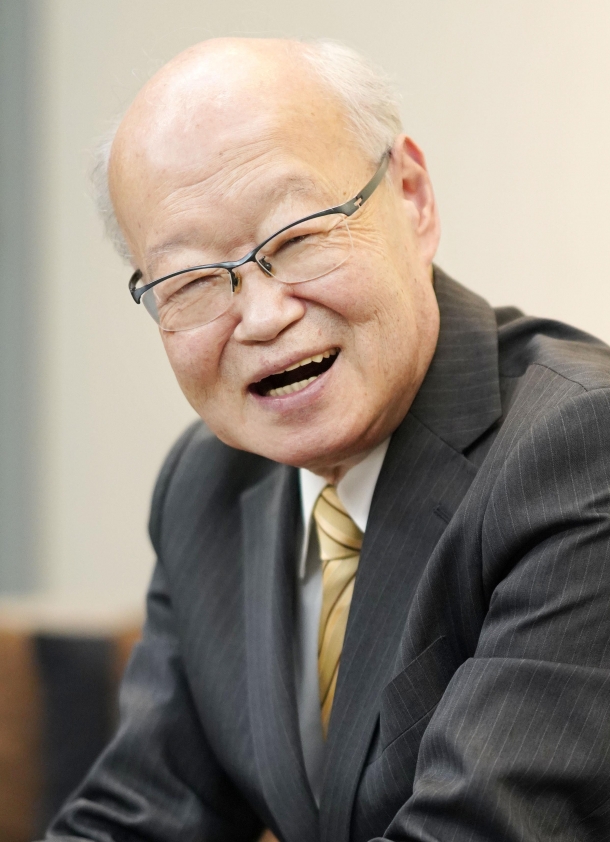
Profile
Tetsuro Koyama was born in Gunma Prefecture in 1949. He graduated from the Department of Economics at Hitotsubashi University. He is a Senior Feature Writer and Editorial Writer at Kyodo News. He has covered Haruki Murakami’s works since 1985, interviewing Murakami 10 times. One of these interviews appears in Murakami’s interview anthology, I Wake Every Morning in Order to Dream.Selected works include: Learning Kanji with Shizuka Shirakawa is Fun and Learning Kanji with Shizuka Shirakawa is Terrifying (Kyodo Tsushinsha and Shincho bunko); Reading the Complete Haruki Murakami (Kodansha gendai shinsho); An Afternoon Reading Haruki Murakami (Bungei Shunju, with Yutaka Yukawa); And Just Then There Was Literature: In Pursuit of Authors, Complete Edition andLearning Real Japanese with Shizuka Shirakawa (Ronsosha); An Introduction to Shizuka Shirakawa: Real, Crazy, Fun (Heibonsha shinsho); Living Tragedy: Disasters and Literature in Japan and Literature is Delicious (Sakuhinsha); Haruki Murakami’s Animals(Waseda shinsho); Haruki Murakami Chronicles (Shunyodo shoten ). He was awarded the 2013 Japan National Press Club Award for his work on Murakami, books that pushed the boundaries of what literary journalism could be.
One TransLiteracy, LLC, is a boutique translation and cultural consultation agency founded by Miyabi “Abbie” Yamamoto, Ph.D. We are a team of highly educated native or native-level bilingual and bicultural experts who provide meticulous translations with linguistic acuity, hone texts for precision and elegance, and provide concise explanations of cross-cultural exchange. The founder, Abbie, grew up in Tsukuba, Japan and received her Ph.D. in Japanese and Korean literatures at the University of California, Berkeley. She is passionate about promoting cross-cultural exchange and everyday practices of intentional inclusion.
*This article was made possible through the support of the Waseda International House of Literature and Top Global University Project in collaboration with Waseda University’s Global Japanese Studies.
Related
-

“Letters from the Haruki Murakami Library”― Rebecca Brown
2025.12.02
-

“Letters from the Haruki Murakami Library”― Camilla Grudova
2025.10.20
-
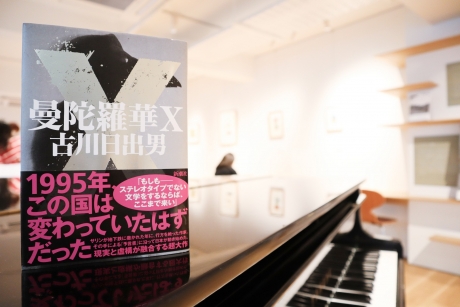
Memories of Things That Never Happened to You
2022.12.12
- Hideo Furukawa
-
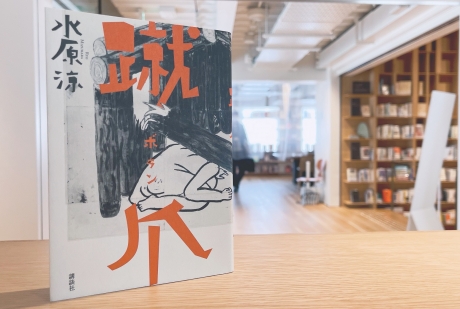
Useful Landscape
2022.03.28
- Ryō Mizuhara
-
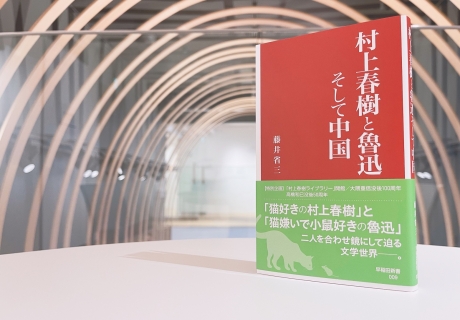
My Personal History with the Literature of Haruki Murakami
2022.02.25
- Shōzō Fujii
-
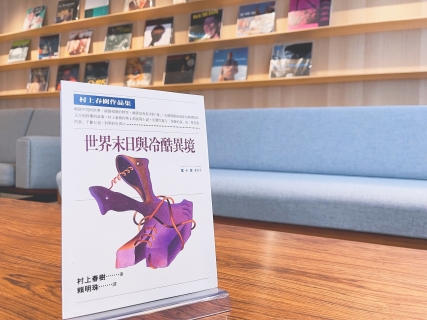
My Encounter with Haruki Murakami, and Taiwan’s
2022.01.27
- Lai Ming-chu
